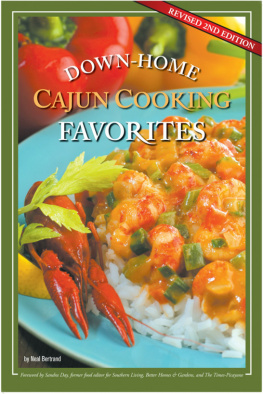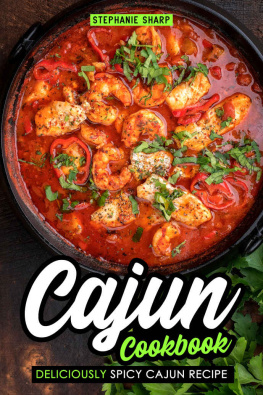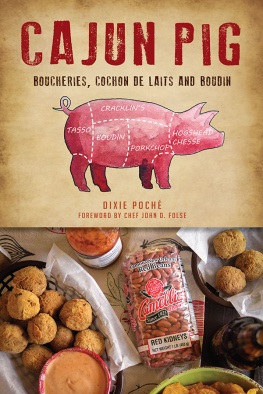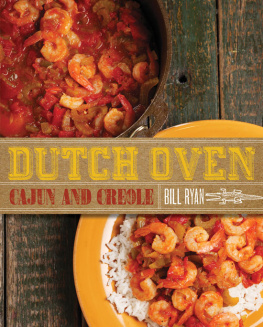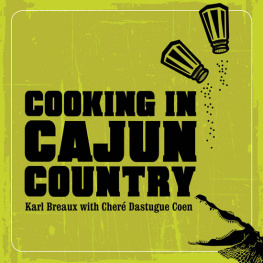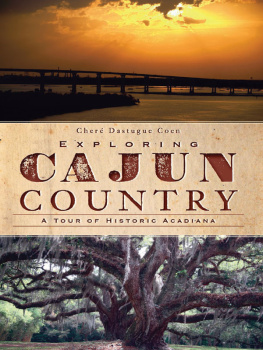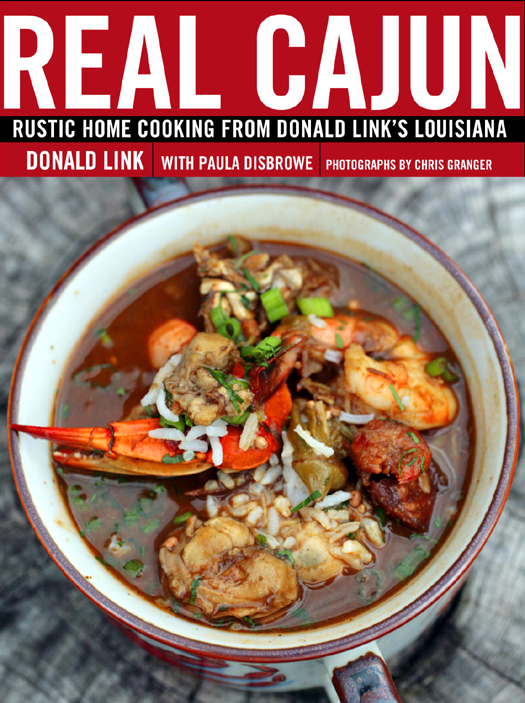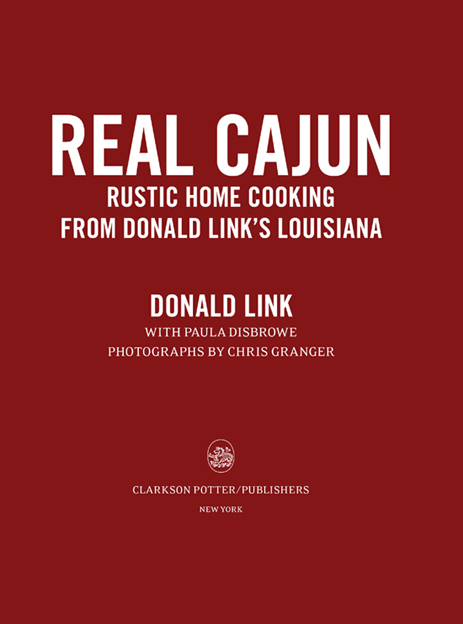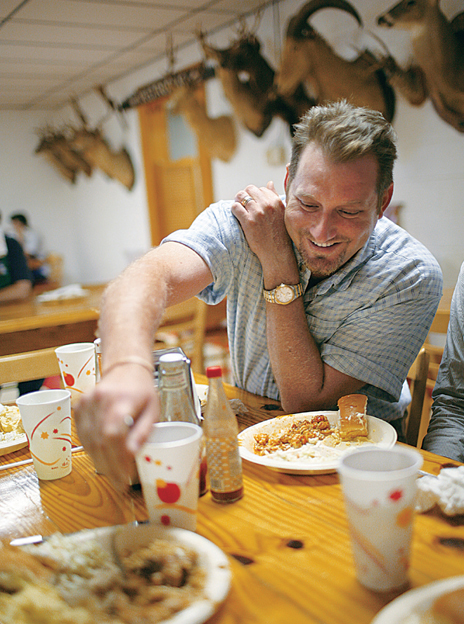
Copyright 2009 by Donald Link
Photographs 2009 by Chris Granger
All rights reserved.
Published in the United States by Clarkson Potter/Publishers, an imprint of the Crown Publishing Group, a division of Random House, Inc., New York.
www.crownpublishing.com
www.clarksonpotter.com
Clarkson Potter is a trademark and Potter with colophon is a registered trademark of Random House, Inc.
Library of Congress Cataloging-in-Publication Data
Link, Donald.
Real Cajun: Rustic home cooking from Donald Links Louisiana / Donald Link. 1st ed.
p. cm.
1. Cookery, AmericanLouisiana style. 2. Cookery, Cajun. 3. Cochon Restaurant (New Orleans, LA.) I. Title.
TX715.2.L68L56 2009
641.59763dc22 2008036989
eISBN: 978-0-7704-3420-5
v3.1
TO MY KIDS, CASSIDY AND NICHOLAS.
I HOPE THIS BOOK WILL HELP YOU CONTINUE
OUR FAMILY TRADITIONS OF GREAT LOUISIANA COOKING.


CONTENTS
5: Outdoor Living
Laissez les Bon Temps Roulez!
Introduction
I grew up on the back roads and bayous of southwest Louisiana, a place that I did not fully appreciate until later in life. Looking back, I realize that the things I took for granted, like making gumbo with my granny, fishing with my grandad Adams, and family feasts made with produce from the garden, seafood from local waters, and wild game from the woods, were special gifts that have done more to shape who I am as a chef than all my culinary training. As a child every occasion of my life revolved around foodholidays, festivals, funerals, or any other excuse to call the family together. Spicy crawfish boils, crab boils, fish fries, and hearty lakeside breakfasts (pan-fried in a cast-iron skillet) were everyday affairs in my family. Though I eventually struck out on my own, leaving Cajun Country and the food I grew up on behind for a time, those early meals at my grandparents table would ultimately inspire the menus at Herbsaint and Cochon, my two restaurants in New Orleans.

Today, now happily settled in New Orleans with a family of my own, I have come to recognize the value and importance of this regions culinary heritage. But Ive also realized that the food traditions I grew up with are in danger of disappearing, along with the people who created them. Hurricane Katrina was a painful reminder that my regions traditionsthe characters, the culture, and the foodare vulnerable. I cant turn back the clock or bring my grandparents back, but because I grew up cooking their food, and because I paid close attention all those years, I am lucky enough to have the recipes and the stories to commemorate a very special place.
My familys food was typical of Acadia Parish (a parish is a county to the rest of yall), which is in the heart of a region called Acadiana, or Cajun Country. This particular region is a swamp-rimmed stretch of I-10 west of the Atchafalaya Basin and east of Lake Charles. Acadiana is a mostly rural swath that runs along the Gulf Coast all the way to Texas. The landscape is incredibly diverse. There are salt marshes and freshwater bayous, brackish coastal bays and endless swamps (populated by gators, snakes, and countless birds and other beasts), and plains tilled and dammed for rice fields and crawfish. Its a land where any given gas station sells tasso, andouille, hogshead cheese, and smoked pig stomach.
Acadia Parish was settled by French exiles from Canada (the term Cajun actually comes from the word Cadian, a shortened form of the French word Acadien). The area also attracted Germans (like my ancestors), who brought along their traditions of sausage making and expert butchering. People in this area are also fondly referred to as coonasses. That word applies if your family has been in the area a whileregardless of whether youre of French descent or not. The people here love to pass a good time, as they say. To this day, when I return, which I do as often as I can, I am amazed at the fun-loving nature of the people.
My first memory of Louisiana (my father was in the military, and we spent the first few years of my life overseas) is of sweltering, oppressive heat. We arrived at my fathers parents house in the tiny town of Sulphur, just outside of Lake Charles, in the dark, in the middle of summer. My sister Michelle and I had been asleep, but the sound of car wheels on the oyster-shell driveway at Granny and Paw Paw Links woke us up. My memory of this moment is so vivid, in fact, that it could have happened yesterday. The steamy, pine-scented air hung over us as a stifling, motionless blanket. The pulsating drone of cicadas and bullfrogs was near deafening; I had never heard anything like it. I started to sweat through my shirt the minute I got out of the car.
That night marked the beginning of my life in Louisiana, my introduction to its exuberant food and cultureand finding out what my family was all about.
The next morning I experienced my first Louisiana food smells: Community Coffee (dark roast, the kind I still drink at home) boiled on the stovetop and pork smothered with onions and garlic. What an amazing smellpork, onions, and rich gravy simmering slowly for hours. When we finally sat down to eat, I noticed that even the way the aroma of the steamed rice permeated the gravy was amazing. Food fragrances just seemed to linger in the thick Louisiana air.
My two sets of grandparents lived a quarter mile from one another, and we settled about a mile from them. Between my mother and father, I have thirty-four aunts and uncles. Thats ten brothers and sisters on Moms side and seven on Dads, plus their spouses and an armada of cousins. To keep things fair, we had to go to both grandparents houses for meals. Between those two families, we did a lot of eating.
The Zaunbrechers and Links, my uncles and cousins, are still farmers, cultivating thousands of acres of rice as well as crawfish, which handily share the land with rice, alternately feeding off the fallow fields and fertilizing them, making the soil richer for grain production. Needless to say, rice was a very important part of my childhood.
My granny Link moved to Sulphur from Crowley, where her parents had settled in the late 1880s, after emigrating from Germany. Grannys parents were rice farmers, so her food was born of rice married with the Cajun cooking typical of the area: deeply flavored bowls of gumbo, beef pot roasts, and pork roasts smothered with plenty of thinly sliced onions and garlic and served au jus (in its natural juices) over rice. It seems like there was always a pot of rice cooking in Grannys house. To this day, when I smell rice cooking I feel as if Im standing in her kitchen.


